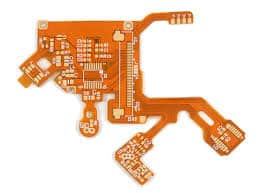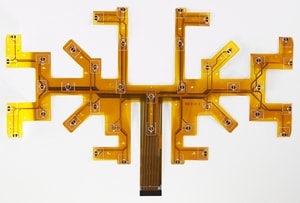Flexible printed circuit boards (flex PCBs) are essential components in many modern electronics. As flexible circuits become more complex, getting an accurate flex PCB quote is crucial to keep costs under control. This guide will walk you through the key factors in determining flex PCB pricing so you can find the best manufacturer and get the lowest price.
What Influences The Cost Of Flex Circuits?
Many variables go into a flex PCB price quote. Here are some of the most important:
Flex PCB Materials
The base material significantly impacts cost. Common options include:
- Polyimide (PI) – Most widely used. Relatively affordable. Withstands high temps.
- Polyester (PET) – Low cost. Lower max temp than PI.
- PEN – High heat resistance. Expensive. Aerospace/defense applications.
- LCP – Extremely high heat resistance. Very expensive.
Thicker material with more layers costs more. Special materials like adhesiveless flex can also increase price.
Flex PCB Size
Larger flex circuits cost more due to greater material use. Smaller boards save money.
Design Complexity
More complex designs require more production steps, driving up cost:
- Layer count – Each added layer increases cost.
- Component density – More components means more precision routing.
- Bends/folds – Tight folds are challenging and add expense.
- Stiffeners – Added to prevent warping. Additional cost.
- Shielding – EMI shielding material increases prices.
- Coverlay/Covercoat – Protective coatings over traces add cost.
Flex PCB Quantity
Economies of scale apply. Unit price decreases as order quantity increases. Small prototyping runs are expensive per board. High volume production offers the lowest cost.
Lead Time
Rushed production leads to higher prices. Standard ~2-4 week lead times are most economical.
Geographical Location
Labor, raw materials, and regulations vary by region. Asia offers the lowest flex PCB prices, while North America and Western Europe are more expensive.
Certifications
Special certifications like ISO, military specs, etc. can increase cost. Verify if you actually need them.
Manufacturer Capabilities
More advanced manufacturing capabilities allow for more complex, expensive flex boards. Get quotes from several manufacturers to compare capabilities.
Tolerances
Tighter tolerances require more precision, driving up cost. Relaxing tolerances if possible saves money.
How To Get The Lowest Flex PCB Quote

Follow these tips to get the most competitive quote:
Provide Detailed Specifications
Give manufacturers complete design files, material requirements, quantity needed, tolerances, and any other specifications upfront. This allows them to give the most accurate quote.
Get Quotes From Multiple Manufacturers
Do not rely on one quote. Get at least 3 quotes from reputable manufacturers to identify the best deal.
Large vs Small Manufacturers
Larger manufacturers offer lower prices at high volumes due to economies of scale. Smaller shops can be more competitive at low quantities.
Consider Location
Asia offers the lowest prices by far, but has longer lead times. Weigh cost savings vs production schedule needs.
Negotiate
Do not be afraid to negotiate with manufacturers, especially if you have an ongoing production need. They will often lower quotes to win business.
Review Each Quote Carefully
Read quotes closely to confirm they meet all specifications. Also look for ways to reduce costs – simpler design, relaxed tolerances, longer lead time, etc.
Buy In Bulk
For long production runs, consider negotiating bulk pricing for large orders. This can significantly reduce per unit costs.
Building Relationships
Over time, cultivate relationships with a few key manufacturers. Offering them consistent business can lead to greater flexibility and lower quotes.
5 Questions To Ask When Evaluating Flex PCB Quotes
When comparing flex PCB quotes, ask these key questions:
1. Does your quote fully meet all my design specifications?
Confirm the manufacturer understands all aspects of your requirements like size, layer count, materials, etc.
2. What is the lead time for this quote?
Compare lead times – is anyone significantly faster? Factor into decision.
3. What are your capabilities for testing and inspecting the boards?
Understand their quality control processes. Get specifics.
4. What options do I have to reduce costs in my design?
See if they recommend any changes to lower the price, like adjusting layer count, tolerances, lead time, etc.
5. Can you provide references from customers with similar projects?
References help verify their experience with flex PCBs like yours. Speak to past clients if possible.
Flexible PCB Quotes – Final Tips

- Provide very clear design specifications and requirements to manufacturers.
- Get multiple quotes – negotiation is common.
- Carefully compare capability, experience, quality, lead time, and cost.
- Weigh cost vs production schedule tradeoffs.
- Consider overall value, not just lowest quote.
- Build relationships with manufacturers over time.
Getting competitive quotes takes effort, but following these guidelines will ensure you get high quality flexible PCBs at the lowest feasible price. Careful sourcing saves significant money in the long run.






Leave a Reply